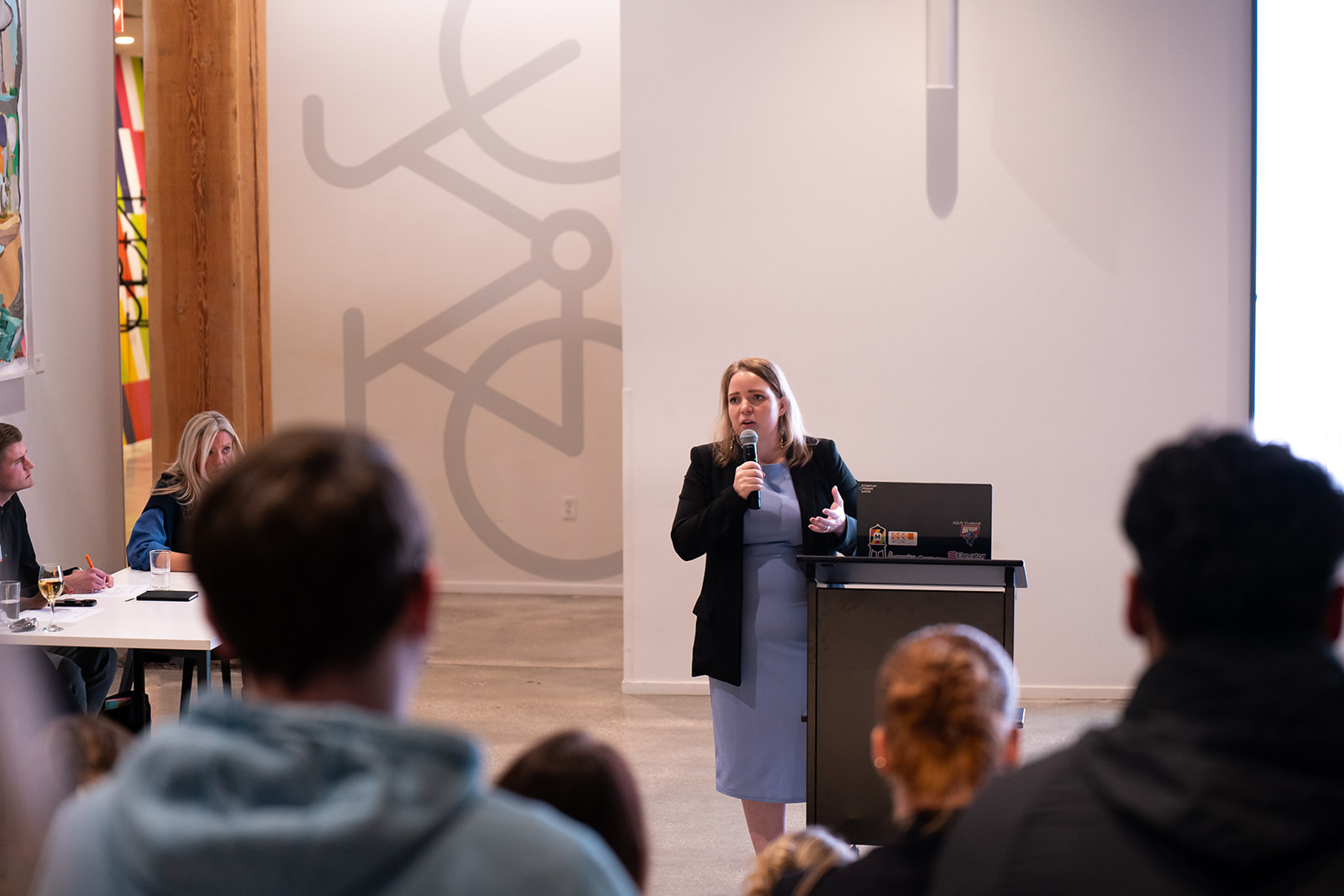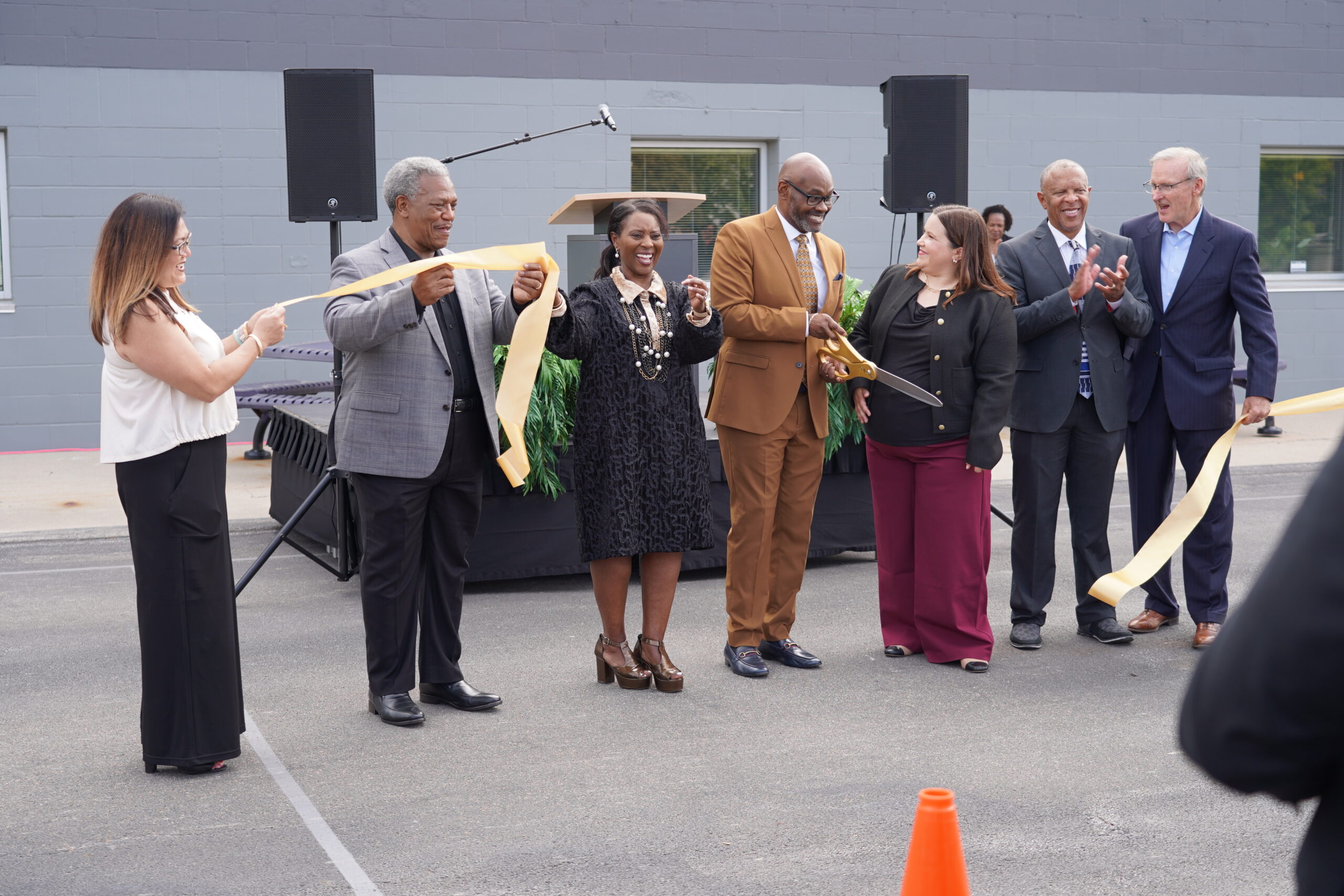In the span of two weeks, the Omaha metro was hit with a one-two combo of dire reports about jobs and brain drain. The Aksarben Foundation and Greater Omaha Chamber of Commerce separately agree that the region has a crisis of stalling jobs and wage growth when compared to other metros.
That’s pushing Nebraskans to leave, creating a gap in tax revenue worth hundreds of millions of dollars and setting up the state for long-term decline. To reverse the trend, “Greater Omaha must grow faster — faster in employment, faster in wages, faster in residents,” said Heath Mello, the Greater Omaha Chamber’s CEO.
Mike Cassling, chair of the Aksarben board of governors, sees Nebraska on the precipice. “If we don’t fix it … the Legislature (will be stuck) working with deficits — and you can’t cut your way to prosperity,” he said. “This is critical for the state to survive.”
To many in Nebraska’s business and economic development community, this data, and the alarm it raises, isn’t new or surprising. Over the years, a conveyor belt of reports has carried similar warnings and a sense of urgency.
Each round highlights Nebraska’s struggle to address job and wage stagnation — and raises thorny questions about how best to understand the state’s economy and fuel its need for growth.
Meanwhile, Nebraska’s situation may be even worse than many realize. Take brain drain, the loss of thousands of college-educated workers each year to other states. Often, the conversation about brain drain has focused on college students and recent graduates in their 20s.
But recently, it has been older, experienced workers who are more likely to leave. In 2023, the largest net loss of Nebraska’s population was in the 30-34 age bracket, with a smaller but persistent net loss of those 40-69 years old. That’s according to Census Bureau data compiled by the Center for Public Affairs Research (CPAR) at the University of Nebraska at Omaha.
By income, those earning $75,000 or more were most likely to leave the state. And half of Nebraska’s brain drain comes out of the Omaha metro alone. As they leave, these workers take their knowledge, their spending and their future tax revenue elsewhere.
These are people “experiencing career mobility and career growth that are looking for new and better (and) different opportunities that maybe don’t exist here,” said Dave Rippe, a former director of the Nebraska Department of Economic Development.
With slow metro job growth and the net loss of experienced workers, “I don’t think these two data points are coincidental,” he said.
A closer look at the data
Both the Aksarben and Greater Omaha Chamber reports look at total employment in the Omaha metro and compare growth to other regions. The same is done with wages.
The Aksarben report also calculated that from 2019-2024, both Omaha and Lincoln increased gross wages (total workforce earnings before deductions) by roughly 5%. Then it projected if Omaha and Lincoln had grown wages by 7% instead. That’s roughly the growth seen in places like Colorado Springs, Des Moines and Sioux Falls.
Together, at 7% growth, the two Nebraska metros would have had almost 70,000 more jobs, over $11 billion in extra wages and $600 million-$800 million in additional state tax revenue.

But projections and total employment data aren’t necessarily the best way to understand Nebraska, or why its slow jobs growth matters. “We have to hire people into jobs that make higher wages for wages to change,” said Josie Schafer, the CPAR director.
“So when we talk about something like wages or overall employment, we’re really missing a much more important detail about our economy, which is how those wages are earned … and the structure of our economy,” she said.
Nebraskans take pride in having one of the lowest unemployment rates in the country. But CPAR data shows the rest of the economic picture isn’t so flattering.
Over half the state’s labor force, made up of roughly 1 million people, work low-wage jobs. Nebraska has one of the highest rates in the country of people working two or more jobs. And it takes the top spot for the labor participation rate of people in poverty.
The real question has been how to shift Nebraska’s economy and grow the high-wage, high-skill jobs that today’s low-wage workers can upgrade into. Comparisons between Omaha and Lincoln and other metro areas may give some answers, but they have to be done carefully, as economies vary by region.
“Demonstrating that Colorado Springs or Raleigh-Carey (North Carolina) have grown is not answering a much more important question, which is, ‘How does Omaha grow?’” Schafer said. The Aksarben Foundation plans to release a follow-up report in the next month with policy recommendations from a deeper analysis of other metros.
So what does growth mean?
Business and economic development leaders broadly agree that Nebraska needs to grow. But that can come with its own downsides, from rising housing costs and gentrification to mistrust of new groups (especially immigrants, who drive most of Nebraska’s population growth).
Still, growth is a net positive, said Jason Ball, CEO of the Lincoln Chamber of Commerce and the Lincoln Partnership for Economic Development. More people, higher-paying jobs and tax revenue mean more resources to tackle community issues.

“In the absence of growth, you’re kind of stuck with what you get,” he said. “To me, that feels like a loss of control … over what our future can look like.”
But Ball also thinks the relentless conversation about economic growth does a disservice to understanding the larger goal for Nebraska, which isn’t just to grow businesses, tax revenue or people. The real aim is to make the “type of environment so that a mom or a dad or a young person or a middle-career person has access to that next step for an opportunity to do better for themselves and their family,” he said.
At the state level, Nebraska often defaults to one solution to create that environment: Lower taxes to entice people and businesses to be here. Nebraska’s high property taxes are a prominent focus for the reports on job stagnation and have been a rallying cry for Gov. Jim Pillen’s administration.
Economic developers agree that taxes play into the growth discussion. But for companies and workers, especially high earners looking across the country for opportunities, Nebraska must offer more than just low tax rates to be competitive — such as the infrastructure to grow a density of attractive high-wage jobs.
Arguably, Nebraska is slipping on that front. Between state deficits and a dogged pursuit of tax relief, entrepreneurship and workforce support programs like the Business Innovation Act and Intern Nebraska have experienced cuts, while the University of Nebraska system — an economic engine and the largest employer in the state — saw reduced state funding, leading to drastic cuts.
Roughly $40 million to build rural workforce housing capacity was also vetoed by Pillen in 2023. That kind of funding has been transformative for some Nebraska cities struggling with a lack of affordable and quality housing.
“If our tax rate suddenly became 0% on everything tomorrow, are people going to come flooding into Nebraska? And if they do, what are they going to do?” said Rippe, the former DED director. “Is there going to be a university left? Is there going to be money for public schools left?”
Data shows that low taxes aren’t usually the most important consideration for people moving, Rippe said. “Just logically, if you were moving … Yeah, you’re going to look at the cost,” he said. “But the very first thing you’re going to look at is, ‘Is there a place for me to live, and can I afford it? Do I have a job? And can I find a community of people?’ We’re all humans. This isn’t hard (to understand).”
In a time of cuts, where are the solutions?
As the efforts designed to address Nebraska’s economic issues are scaled back, it can be hard to see how the latest round of jobs and brain drain reports will move the needle.
Cassling said he feels a new sense of urgency from elected and business leaders. But “I don’t think the Legislature has been sitting on its hands,” said State Sen. Wendy DeBoer, chair of the Legislature’s Planning Committee, which has seen regular presentations about Nebraska’s demographics and economy.
Both DeBoer and Cassling see an opportunity for Nebraska’s leaders to reevaluate the 2020 ImagiNE Nebraska Act, which was intended to create more favorable tax incentives for business attraction and retention. If many Nebraskans are still working low-wage jobs, “it doesn’t make sense to subsidize jobs that come into the state, that then we have to subsidize the people … because they can’t live on the wage,” she said.

Some economic developers, like Catherine Lang, a former Nebraska commissioner of labor and director of DED, want the state to make more data-informed decisions about what programs to cut or fund.
“A concern I would have is (leaders thinking), ‘They must not be working. Things aren’t changing fast enough. So let’s just stop doing this,’” Lang said. “Now it’s years down the road when you go, ‘Oh, damn, I really wish we would have continued those programs’ … and where’s that competitive opportunity? You’ve lost it, maybe.”
Creating effective and lasting solutions will take political will and a longer view than the state’s two-year budget cycle, said Bryan Slone, the former CEO of the Nebraska Chamber of Commerce. Consistency is key, “rather than this constant funding, defunding, funding, defunding because inflation went up or revenues are down this year,” he said.
“We would never do that in business,” Slone said. “That’s one place government needs to act more like business.”
Lev Gringauz is a Report for America corps member who writes about corporate innovation and workforce development for Silicon Prairie News.





Leave a Reply